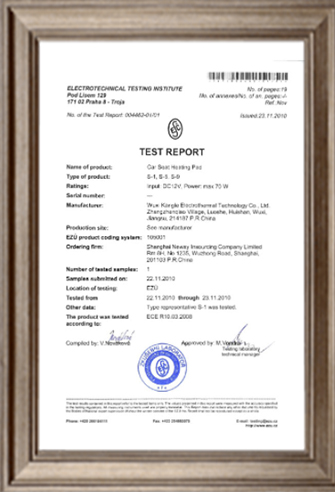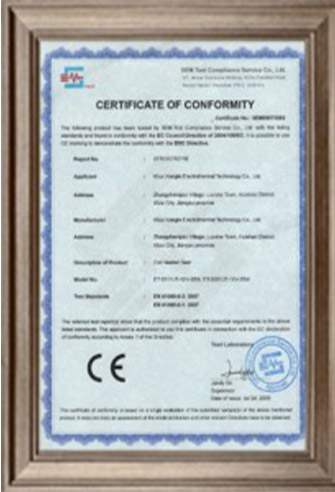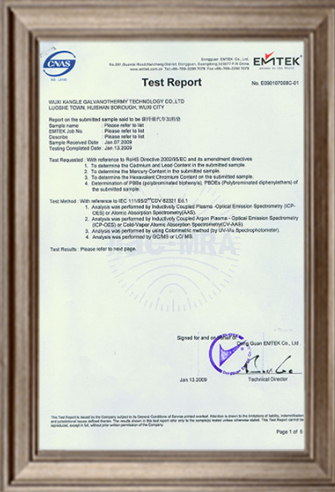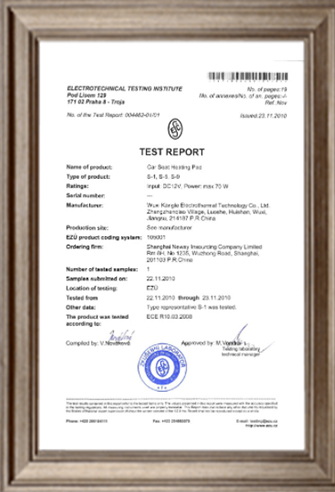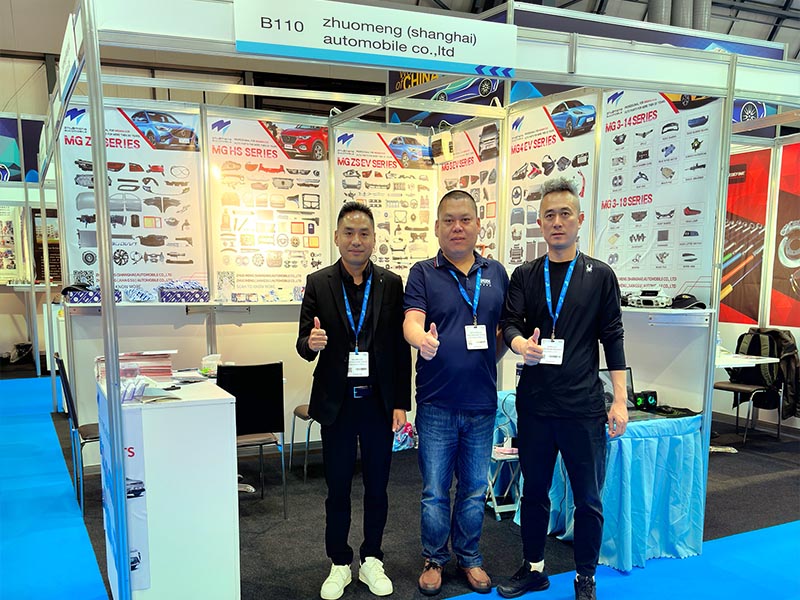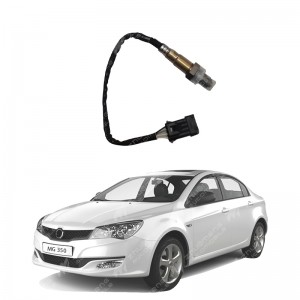Automobile oxygen sensor.
Automobile oxygen sensor is the key feedback sensor in the EFI engine control system, and it is the key part to control automobile exhaust emission, reduce automobile environmental pollution and improve the fuel combustion quality of automobile engine.
There are two kinds of oxygen sensors, zirconia and titanium dioxide.
Oxygen sensor is the use of ceramic sensitive elements to measure the oxygen potential in various heating furnaces or exhaust pipes, calculate the corresponding oxygen concentration by the principle of chemical balance, to monitor and control the combustion air-fuel ratio in the furnace, to ensure product quality and exhaust emission standards of measuring elements, widely used in all kinds of coal combustion, oil combustion, gas combustion and other furnace atmosphere control.
The oxygen sensor is used to electronically control the feedback control system of the fuel injection device to detect the oxygen concentration in the exhaust gas and the density of the air-fuel ratio, to monitor the theoretical air-fuel ratio (14.7:1) combustion in the engine, and to send feedback signals to the computer.
Working principle
The oxygen sensor works similarly to a battery, with the element zirconia in the sensor acting like an electrolyte. The basic working principle is: under certain conditions (high temperature and platinum catalysis), the oxygen concentration difference between the inside and outside of the Hao oxide is used to generate a potential difference, and the greater the concentration difference, the greater the potential difference. The content of oxygen in the atmosphere is 21%, the exhaust gas after concentrated combustion actually does not contain oxygen, and the exhaust gas generated after the combustion of the dilute mixture or the exhaust gas generated by the lack of fire contains more oxygen, but it is still much less than the oxygen in the atmosphere.
Under the catalysis of high temperature and platinum, the oxygen attached to the oxygen sensor is consumed, so the voltage difference is generated, the output voltage of the concentrated mixture is close to 1V, and the dilute mixture is close to 0V. According to the voltage signal of the oxygen sensor, the air-fuel ratio is controlled to adjust the fuel injection pulse width, so the electronic control of the oxygen sensor is the key sensor for fuel metering. The oxygen sensor can only be fully characterized at high temperatures (the end reaches more than 300 ° C) and can output voltage. It responds most quickly to changes in the mixture at about 800 ° C.
Tips
The zirconium dioxide oxygen sensor reflects the change of the concentration of the combustible mixture through the change of voltage, and the titanium dioxide oxygen sensor reflects the change of the combustible mixture through the change of resistance. The electronic control system using the zirconia oxygen sensor can not control the actual air-fuel ratio near the theoretical air-fuel ratio when the engine working condition deteriorates, while the titanium dioxide oxygen sensor can also control the actual air-fuel ratio near the theoretical air-fuel ratio when the engine working condition deteriorates.
The injection volume (injection pulse width) adjusted by the control unit in a short period of time according to the oxygen sensor signal is called short-term fuel correction, which is controlled by the output voltage of the oxygen sensor.
Long-term fuel correction is the value determined by the control unit's modification of the control unit's operating data structure according to the change of short-term fuel correction coefficient.
Common fault
Once the oxygen sensor fails, the computer of the electronic fuel injection system can not get the information of oxygen concentration in the exhaust pipe, so it can not feedback control the air-fuel ratio, which will increase the engine fuel consumption and exhaust pollution, and the engine will appear unstable idle speed, lack of fire, surge and other fault phenomena. Therefore, the fault must be removed or replaced in a timely manner [1].
Poisoning fault
Oxygen sensor poisoning is a frequent and difficult to prevent a failure, especially the frequent use of leaded gasoline cars, even the new oxygen sensor, can only work a few thousand kilometers. If it is only a minor lead poisoning, then using a tank of lead-free gasoline can eliminate the lead on the surface of the oxygen sensor and return it to normal operation. However, often due to the high exhaust temperature, lead intrudes into its interior, hindering the diffusion of oxygen ions, making the oxygen sensor ineffective, at which time it can only be replaced.
In addition, silicon poisoning of oxygen sensors is also a common occurrence. In general, the silica generated after the combustion of silicon compounds contained in gasoline and lubricating oil, and the silicone gas emitted by the improper use of silicone rubber sealing gaskets will make the oxygen sensor fail, so good quality fuel and lubricating oil should be used.
When repairing, it is necessary to correctly select and install rubber gaskets, do not apply solvents and anti-stick agents other than those specified by the manufacturer on the sensor, etc. Due to poor engine combustion, carbon deposits are formed on the surface of the oxygen sensor, or oil or dust and other sediments are entered inside the oxygen sensor, which will hinder or block the external air into the interior of the oxygen sensor, so that the output signal of the oxygen sensor is out of alignment. The ECU cannot correct the air-fuel ratio in time. The production of carbon deposits is mainly manifested as an increase in fuel consumption and a significant increase in emission concentration. At this time, if the sediment is removed, it will return to normal work.
Ceramic cracking
The ceramic of the oxygen sensor is hard and brittle, and knocking with hard objects or blowing with strong airflow may make it crumble and fail. Therefore, it is necessary to be especially careful when dealing with problems and replace them in time.
The block wire is burned
The heater resistance wire is burned off. For the heated oxygen sensor, if the heater resistance wire is burned, it is difficult to make the sensor reach the normal working temperature and lose its function.
Line disconnection
The internal circuit of the oxygen sensor is disconnected.
Inspection method
Heater resistance check
Remove the plug of the oxygen sensor harness, and use a multimeter to measure the resistance between the heater pole and the iron pole in the oxygen sensor terminal. The resistance value is 4-40Ω(refer to the instructions of the specific model). If it does not meet the standard, replace the oxygen sensor.
Measurement of feedback voltage
When measuring the feedback voltage of the oxygen sensor, the harness plug of the oxygen sensor should be unplugged, and a thin wire should be drawn from the output terminal of the feedback voltage of the oxygen sensor according to the circuit diagram of the model, and then plugged in the harness plug. The feedback voltage can be measured from the lead line during the engine operation (some models can also measure the feedback voltage of the oxygen sensor from the fault detection socket). For example, a series of cars produced by Toyota Motor Company can measure the feedback voltage of the oxygen sensor directly from the OX1 or OX2 terminals in the fault detection socket).
When measuring the feedback voltage of the oxygen sensor, it is best to use a pointer type multimeter with a low range (usually 2V) and high impedance (internal resistance greater than 10MΩ). The specific detection methods are as follows:
1. Turn the engine hot to normal working temperature (or run at 2500r/min after starting for 2min);
2. Connect the negative pen of the multimeter voltage stop to E1 or the negative electrode of the battery in the fault detection socket, and the positive pen to the OX1 or OX2 jack in the fault detection socket, or to the number | on the wiring harness plug of the oxygen sensor.
3, let the engine keep running at a speed of about 2500r/min, and check whether the voltmeter pointer can swing back and forth between 0-1V, and record the number of voltmeter pointer swings within 10s. Under normal circumstances, with the progress of feedback control, the feedback voltage of the oxygen sensor will constantly change above and below 0.45V, and the feedback voltage should change no less than 8 times within 10s.
If it is less than 8 times, it means that the oxygen sensor or feedback control system is not working properly, which may be caused by carbon accumulation on the surface of the oxygen sensor, so that the sensitivity is reduced. To this end, the engine should be run at 2500r/min for about 2 minutes to remove carbon deposits on the surface of the oxygen sensor, and then check the feedback voltage. If the voltmeter pointer is still changing slowly after the carbon can be removed, it indicates that the oxygen sensor is damaged, or the computer feedback control circuit is faulty.
4, oxygen sensor appearance color inspection
Remove the oxygen sensor from the exhaust pipe and check whether the vent hole on the sensor housing is blocked and the ceramic core is damaged. If damaged, replace the oxygen sensor.
Faults can also be determined by observing the color of the top part of the oxygen sensor:
1, light gray top: this is the normal color of the oxygen sensor;
2, white top: caused by silicon pollution, the oxygen sensor must be replaced at this time;
3, brown top (as shown in Figure 1) : caused by lead pollution, if serious, must also replace the oxygen sensor;
(4) Black top: caused by carbon deposition, after eliminating the carbon deposition fault of the engine, the carbon deposition on the oxygen sensor can generally be automatically removed.
If you want to know more, keep reading the other articles on this site!
Please call us if you need such products.
Zhuo Meng Shanghai Auto Co., Ltd. is committed to selling MG&MAUXS auto parts welcome to buy.


